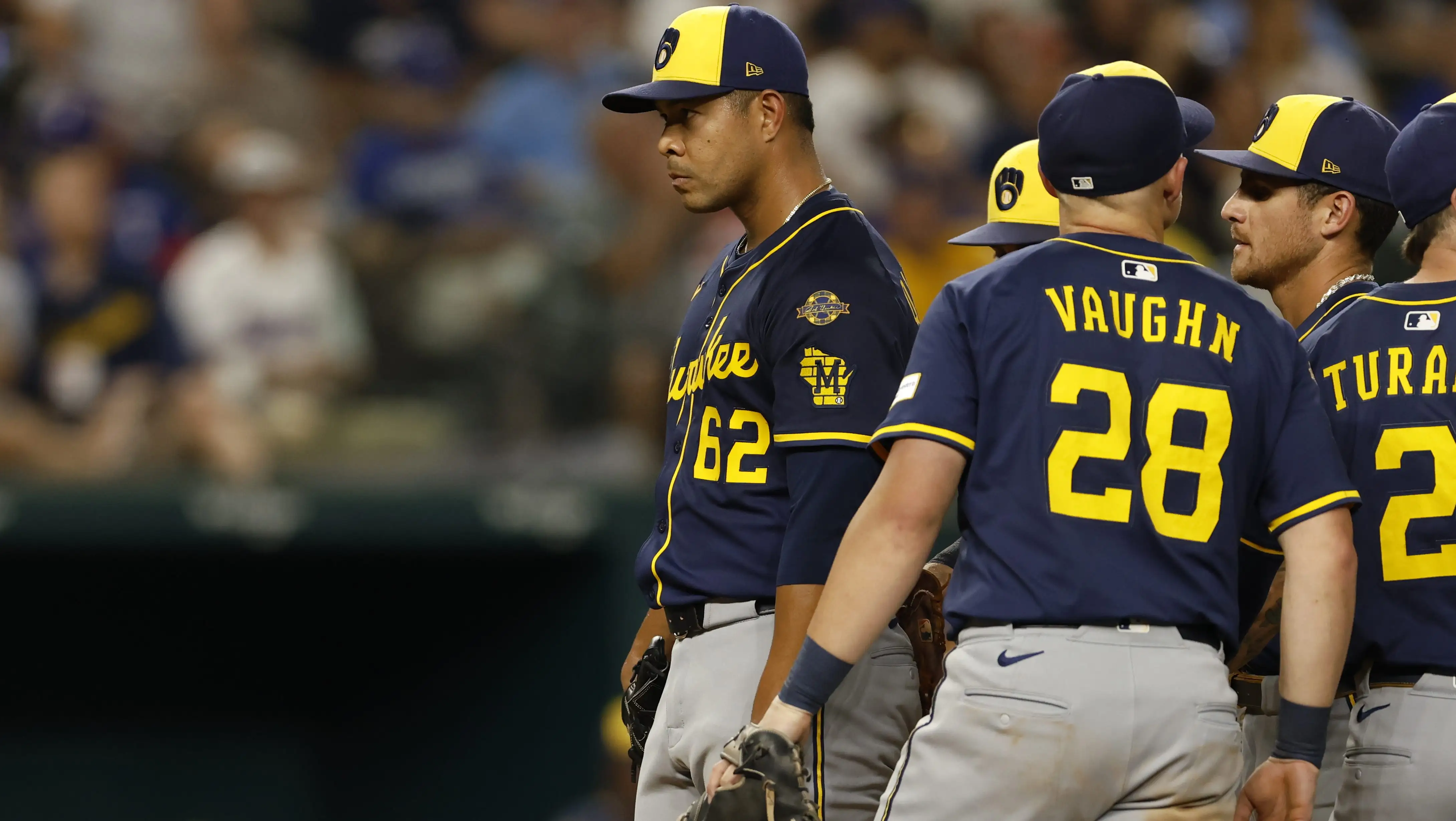
The Milwaukee Brewers suffered a brutal blow this week: veteran left-hander Jose Quintana, who signed a one-year deal for roughly $4 million, has been placed on the 15-day Injured List with a strained left calf, ending his regular-season run. What appeared to be a tweak during Sunday’s game against St. Louis has turned into a season-ending situation, though the Brewers still hold out hope that he will be available for a postseason spot.
Quintana has been one of Milwaukee’s best bargains and a stabilizing presence in their rotation. In 24 starts this season he compiled an 11-7 record with a 3.96 ERA over 131 2/3 innings, striking out 89 batters against 50 walks, showing why the low-cost veteran signing was one of the smarter offseason moves for Milwaukee. His absence now raises serious questions about how deep the Brewers can go, especially given the other injuries piling up around the pitching staff.
Rotation depth tested, bullpen already taxed
Losing Quintana puts even more pressure on what was already a thin starting-pitching staff. Milwaukee has been riding a mix of veteran arms and younger starters, but depth was never a luxury for a small-payroll club. The Brewers will need several internal options to step up or consider external reinforcements, even if only temporary stopgaps, to avoid overtaxing the bullpen or leaving holes every fifth day.
And speaking of the bullpen, it’s hardly resting easy. The Brewers have seen injuries to key arms at several points this season, and Quintana’s exit only tightens the margin for error. Milwaukee may need to shuffle relievers into long relief roles, or cross their fingers that rehabbing arms, or fresh minor league arms, can return in time to help shoulder the burden down the stretch and into October.
Searching for solutions
To navigate this difficult stretch, the Brewers will likely turn first to their farm system. Promoting arms from Triple-A, whether seasoned depth pieces or intriguing prospects, offers the most straightforward way to fill Quintana’s innings. This approach is consistent with Milwaukee’s philosophy of developing talent internally, though success is far from guaranteed when thrusting young pitchers into a high-stakes playoff chase.
Another possible path lies in restructuring the bullpen, converting long relievers into temporary starters or pairing pitchers in tandem outings. This strategy requires precise management, as balancing workloads while maintaining effectiveness in late-inning situations can be a juggling act. Still, given Milwaukee’s history of squeezing value from overlooked arms, it would not be surprising to see the club craft creative solutions rather than make expensive acquisitions.
The trade and waiver markets also provide opportunities, though the Brewers’ limited payroll makes splashy moves unlikely. Instead, the team may explore low-cost rentals or reclamation projects–pitchers coming off down years who could be had for modest returns. Such moves carry risk but can occasionally pay off handsomely, especially for a team with Milwaukee’s knack for identifying undervalued talent.
Trevor Megill Update
While Brewers fans might hope for a bullpen boost with the return of their All-Star closer, Trevor Megill’s recovery remains uncertain. Megill was placed on the Injured List on August 27 with a right flexor strain, and early optimism that he could return by mid-September has been tempered by setbacks.
Recent live batting practice sessions and bullpen throws have triggered soreness, prompting caution from the Brewers’ medical staff and management alike. Manager Pat Murphy has publicly noted that Megill’s elbow “is not checking out medically,” and his return timeline now appears to be fluid, rather than fixed.
“He doesn’t obviously want to pitch with a flexor strain,” Murphy said. “Nobody does. We don’t want him to. His health is paramount. He’s working through the process of trying to hurry up, and that’s not always the best thing for a flexor strain.”



